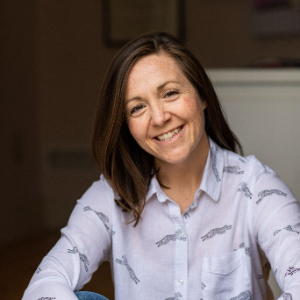
The Urge to Control
Imagine this…you tell your students it is time to clean up the classroom and get ready for dismissal. They get excited and start moving all over the room talking, distracted from the task at hand. You try to take control but are feeling the energy and triggers bubbling up inside of you as you lose the attention of your students. Your irritation and anxiety start to rise. You feel a strong urge to control their behaviors and demand their attention. You end up yelling and taking away a privilege. Nobody feels heard, you feel guilty, and you are left with a classroom to clean up alone. This week, we explore the triggers of control and discover tools to nurture social-emotional wellness instead, starting with you.
The Urge to Control
The urge to control and often fix our children is deeply engrained, in some form or another. Rather than repeating the pattern of emotional control, suppression, and shame, I am continuously working on becoming more aware of my own emotions during these times and practicing regulating as a way to regain attention in a healthy way. Often it simply means sitting calmly and finding acceptance to what is happening in that moment before reacting. It could only take a 30-second pause to regroup and figure out what happens next.
Side note, you might still be left with a messy classroom, but guarantee those sensitive students in your group will tune into your calm energy and start to calm down themselves. You can check in with them quietly and ask for their help. This could be a ripple effect in the class. Either way, you will leave feeling more balanced than if you react in a big way. And you will be tending to your over worked nervous system at the end of a long day.
Mirror neurons, as explained by Dan Seigle, teach us that when we can regulate ourselves we automatically help teach and regulate our children. This concept motivated me to do the work on myself, to make the healing of my own emotional trauma more intentional, AND in doing so to teach my children healthy emotional processing.
Side note, WE ALSO REGULATE based on children. So find forgiveness and acceptance for yourself in the moments of chaos in the classroom or at home when you feel stressed and lose your cool. Their energy rubs off on you, too! This is why at Kind Mind, we work on practicing TOGETHER.
Building emotional awareness and learning healthy emotional processing is founded in compassion at Kind Mind. I developed the Kind Mind Compass, a visual guide through an evidence-based compassion practice, and what I like to call a compassionate approach to emotional regulation.
The basic steps are as follows:
- NOTICE - the emotional disturbance
- GET CURIOUS - about where you feel it in your body
- BREATHE - to calm and soothe your nervous system
- ACCEPT - yourself with love
- ENRICH - by writing, drawing, or playing to fully decompress


